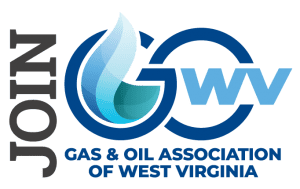Amid much controversy, two horizontal gas wells were drilled into the Marcellus shale rock formation in 2011 just barely outside of Morgantown. Now two more wells are slated to be drilled on the same pad in the summer of 2015, but the company, Charleston-based Northeast Natural Energy is teaming up this time with a host of researchers.
An $11-million agreement between Northeast Natural Energy, WVU, Ohio State University, and the Department of Energy is allowing for the creation and management for five years of the the “Marcellus Shale Energy and Environment Laboratory.”
Director of WVU Energy Institute, Brian J. Anderson said when a call came for proposals to develop a field laboratory to study natural gas drilling practices, he and his colleagues and collaborators jumped at the chance, and were then chosen to receive the federal funds.
“We’re doing a number of different monitoring efforts really to make this as transparent as possible. At times we call it the “Transparent Well.” Not transparent like glass, but transparent to the public,” Anderson said.
Northeast President and CEO Mike John said he’s excited to working alongside folks from West Virginia University and the US Department of Energy, to give researchers insight into the work Northeast does.
“And we will look forward to applying best-management practices to whatever work that we will do on the Morgantown Industrial Site in 2015,” John said.
The principal investigator and director of the lab, professor of geology at WVU, Timothy Carr, is joined by many researchers from the university and from Ohio State University, and federal partners from DOE.
WVU Schools/Departments participating in the study include:
Civil and Environmental Engineering
Geology and Geography
Petroleum and Natural Gas Engineering
Public Administration
Public Health
Regional Research Institute
Geographic Information Systems Tech Center
West Virginia Water Research Institute
Site Pros and Cons
The Northeast well pad is at the Morgantown Industrial Park–a site that concerns residents and utility managers because it’s located just up the hill from the Monongahela River, and just 1500 feet upstream from the city’s drinking water intake.
But researchers and industry professionals alike say risks are low at the this drilling pad because of the expected oversight.
“This is actually probably going to be the safest well in the world,” said Director of WVU Energy Institute, Brian J. Anderson. A Morgantown resident himself, he says he drinks Morgantown’s tap water, so he understands community concerns. But he doesn’t share them. He’s hopeful that research on site will not only be monitored to insure safety, but provide valuable information on best-practices for the industry around the globe.
Anderson explains the site provides unique opportunities not only for it’s proximity to the University:
It’s a brownfield, meaning, the land has been used for industrial purposes and contains some level of pollutants. So the Environmental Protection Agency has data from water monitoring wells that have existed for many years.
It’s a slow-developing site. Instead of drilling six or eight wells on the pad at once, as is typical, Northeast is drilling one at a time, which is desirable for scientists who want to observe practices systematically.
It’s heavily scrutinized. The public utility board and mass of concerned citizens have made it a point to see that more precautions are taken given the proximity to larger population, and the municipal drinking water intake. Extra measures have provided for more site control.
The Plan
Anderson says Northeast will drill two wells this summer. One will be devoted to science, research and observation; the other will be a typical production well. He says research will explore noise, air, water, traffic, and waste as well newer drilling techniques like using gas on site to power the many on site generators (instead of diesel fuel), and perhaps using synthetic-based drilling mud instead of water-based mud to frack the wells.
Permit applications are in the process of making it through the Department of Environmental Protection.

